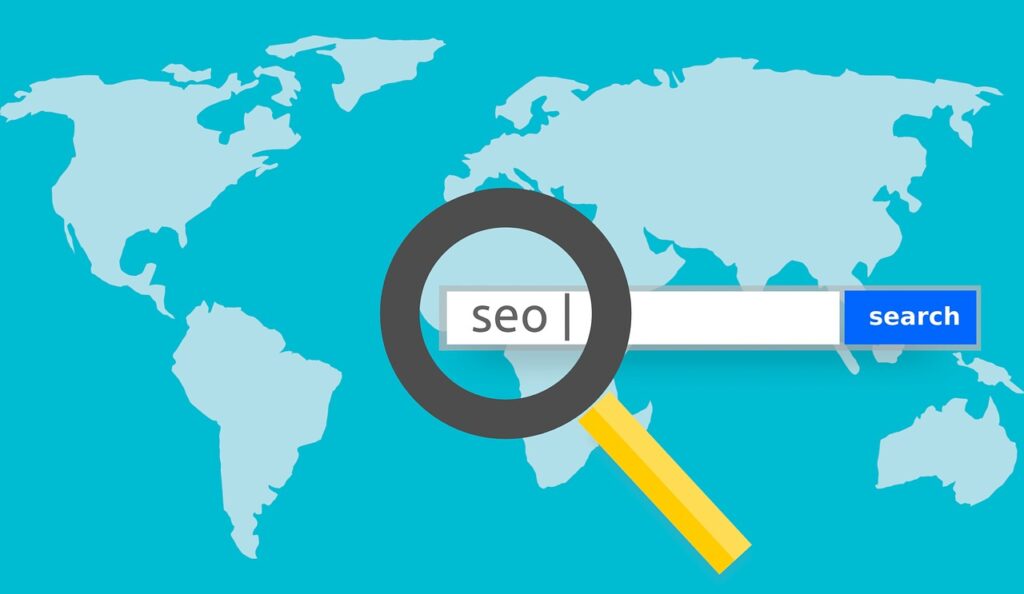If you own a small business, you already know how important it is to be found online. You also need to rank high in Google search results if you want to be found online. But how do you beat out your rivals for the top spot on Google? You can outrank your competition on search engines by employing a variety of successful SEO services in Australia.
In this post, we’ll look at some SEO tactics that can help you outshine your competitors and achieve top SEO rankings.

There are numerous methods for improving the SEO of your website’s pages. Title tags, keywords, image tags, internal link structure, and inbound links are all things that search engines check for (also known as backlinks). In addition to site structure and design, visitor behaviour, and some other external, off-site considerations, search engines consider how highly ranked the site must be in their SERPs.
When all of these variables are considered, Hring SEO agencies in Australia primarily affect two things: rankings and visibility.
Rankings
A web page can only rank for one position at a time, starting at position one and continuing thru the final count of search engine results for the query. Due to content freshness, competition in the SERP, or algorithm updates by the search engine itself, a web page’s ranking may alter over time.
Visibility
This word refers to the prominence of a specific domain in search engine results. Your domain will appear prominently in SERPs if it has high visibility. When a domain is still not visible for a large number of specific search queries, it’s said to have low search visibility.
Both are in charge of achieving the two most important SEO goals: traffic and domain authority.
Another incentive to use SEO is that it is cost-effective. The discipline essentially aids in the positioning of your brand across the full purchasing process. As a result, you’ll be able to ensure that your marketing techniques are in line with the new buying habits.
Because, as Google has admitted, customer behaviour has changed for the better. As of June 2019, Google accounted for 94 per cent of all online searches. Furthermore, they prefer to do the majority of their shopping on their own.
In a HubSpot Investigate poll, for example, we discovered that 77 per cent of respondents research a brand before connecting with it. Customers prefer knowledge bases to all other self-service channels, according to Forrester. Furthermore, this procedure has never been more difficult.
Finally, according to DemandGen’s 2017 B2B Buyer’s Survey, 67 per cent of B2B buyers begin their search with a broad web search.
However, how are they using search engines in this process?
They use Google to look up information about their difficulty early on in the process. Some people also want to know about possible remedies.
Then, before contacting a provider, they examine available options based on reviews or social media excitement. However, this occurs only after they have exhausted all available information sources.
As a result, the only way customers will notice and evaluate you is if you appear in their search results.
Three Essential Elements of a Successful SEO Strategy
You must increase ranking indicators in three areas to optimize a site: technical website layout, content, and linkages. So, let’s go over them one by one.
1. Technical Setup
Three things should happen to make your website rank:
- A search engine must locate your online pages.
- Then it has to scan them to figure out what they’re about and what keywords they’re using.
- Finally, it must add them to its index, which is a collection of all the content it has discovered on the internet. As a result, its system will take into account presenting your website for relevant requests.
Doesn’t it appear to be straightforward? There’s no need to be concerned. After all, if you can browse your site without issue, why shouldn’t Google?

Text is all that matters to a search engine.
As a result, any components that the search engine is unable to represent in this manner are hidden. As a result, even if the website appears to be up and running, Google may consider its content inaccessible. It ensures that Google can scan and index your website and pages without any issues. The following are the most essential elements that influence it:
- Website navigation and links
- Simple URL structure
- Page speed
- Dead links or broken redirects
- Sitemap and Robots.txt files
- Duplicate content
2. Content
When you use a search engine, you’re seeking material — for example, information on a specific issue or problem.
This data can be displayed in a number of different ways. It could be in the form of text, such as a blog post or a web page. It could also be a video, a product recommendation, or a company directory.
It’s all about the content.
It’s also what helps SEO get more search prominence.
The following are two causes for this:
For starters, when customers search, they want content. Whatever they’re seeking, it’s content that gives it to them. And the more of it you share, the better your chances of being found in searches. In addition, search engines use content to evaluate how a page should be ranked. We already discussed the concept of relevancy between a page and a user’s search query.
Robots determine a page’s topic while crawling it. They can judge the quality of a page by examining aspects such as its length and structure. Search engines can match a person’s query with the pages they believe are the most relevant to it based on this information.
Related Blog: How To Win Over Search Engine Optimization in Australia?
Keyword Research
The first stage in the content optimization process is keyword research. The goal of keyword research in SEO strategy is not to increase the number of visits to the site. You like to engage people looking for what you have to offer and potentially turn into leads and, eventually, consumers.
However, this is only achievable if it ranks for the search terms that people use. There’s no way they’d ever discover you otherwise. And that’s even if your site came up first in the search results.
That’s why the first step in SEO services in Sydney is to figure out what phrases potential consumers type into search engines.
Identifying terms and subjects important to your organization is usually the first step in the process. Then it’s time to turn them into starting keywords. Finally, do considerable research to find relevant terms your target audience might use.
We’ve written a comprehensive beginner’s guide to keyword research. It explains how to conduct keyword research in great depth. Use it to figure out which search words you must be focusing on.
After you’ve compiled a list of keywords, the following step is to optimize your content. On-page optimization is how SEO experts in Australia respond to this technique.
What is On-Page Optimization

The On-page optimization, often known as on-page SEO, guarantees that search engines recognize a page’s concept and keywords and match it to relevant searches.
3. Hyperlinks
You already know that no page will rank without two factors: relevance and authority. Google and other search engines emphasize pages, both related to users’ searches and prominent in their effort to offer the most accurate responses.
The first two areas, technological setup and content, both aimed to improve relevancy.
Popularity, on the other hand, is determined by links. But, before we get into how links work, let’s define what SEOs mean when they talk about links.
What is the definition of a backlink?
Backlinks are references to the content on other websites. You get a backlink to your site every time another website references and directs its viewers to your material.
The quantity and quality of connections like these are used by Google to determine a website’s authority. Its argument is that webmasters will link to a popular, high-quality website more frequently than a substandard one.
Links Quality Factors
Low-quality or questionable links, such as those generated with the intent of making a site appear more authoritative to Google, may result in a drop in your ranks.
As a result, when it comes to link building, SEO companies in Australia don’t focus on building just any links. They strive to produce the best possible references.
Creating Links
The process of collecting new backlinks is referred to as link building in SEO. However, as many practitioners will confess, it can be a difficult task. Link building involves creativity, smart thinking, and patience if you want to do it right. You must devise a link-building strategy to produce high links. That is no small achievement.
Keep in mind that your links must meet a variety of quality standards. Furthermore, search engines must not be able to tell that you made them on purpose.
Backlinks from editorial, organic sources: These are backlinks from websites that reference your material on their own.

Outreach: This method entails contacting other websites to obtain links. You may make a fantastic piece of content and send it to them via email. As a result, if people find it useful, they’ll refer to it. You can also provide a location for them to link to it.
Guest posting: Guest posting is when you write a blog post and post it on a third-party website. As a result, such businesses frequently let you include one or two links to your website in the content and author profile.
Profile links: Finally, many websites allow you to add a link to your profile. A good example is online profiles. Often, while creating such a profile, you can also include a link to your website.
Competitive analysis: Many SEOs examine their competitors’ backlinks on a regular basis to see which ones they can replicate for their own sites. If you’re still reading, you’ve just learned the secret to your site’s search engine success.
.Are you hesitant to outsource SEO or any other type of digital marketing services in Melbourne? We are aware of the situation. Please contact us for any queries or issues. We’re here to assist you!




